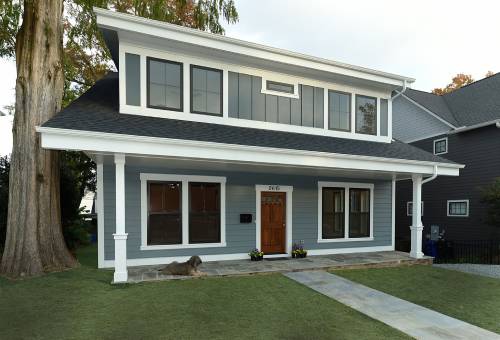As our loved ones age, the desire to maintain independence and comfort in familiar surroundings becomes increasingly important. Aging in place—the ability to live in one’s home safely and comfortably, regardless of age or ability—requires thoughtful home design. By implementing specific modifications, you can create an environment that promotes safety, accessibility, and a sense of belonging. Here are key considerations and design tips for aging in place.
1. Entrance Accessibility
The entryway sets the tone for the entire home. Consider the following enhancements:
- Ramps: Replace stairs with ramps or add a gentle incline to existing stairs, ensuring they are sturdy and well-constructed.
- Wide Doorways: Install wider doorways (at least 36 inches) to accommodate mobility aids like walkers or wheelchairs.
- Non-Slip Surfaces: Use non-slip materials for walkways and entryways to prevent falls, especially in wet weather.
2. Living Areas
The main living spaces should be designed for ease of movement and comfort:
- Furniture Arrangement: Arrange furniture to create clear pathways. Avoid sharp corners and ensure there’s adequate space to navigate.
- Ergonomic Design: Choose furniture that is comfortable and easy to get in and out of, such as sofas and chairs with higher seats.
- Lighting: Incorporate ample, adjustable lighting. Use brighter bulbs and consider smart lighting solutions that can be controlled remotely or with voice commands.
3. Kitchen Modifications
The kitchen is often the heart of the home, and making it accessible can greatly enhance daily living:
- Lower Countertops: Adjust counter heights for ease of use, and consider pull-out shelves or drawers to minimize bending and stretching.
- Lever-Style Faucets: Install lever or touchless faucets that are easier to operate than traditional knobs.
- Easy Access Storage: Use open shelving or pull-out cabinets to ensure items are within reach. Avoid deep cabinets that require bending down.
4. Bathroom Safety
Bathrooms can be particularly hazardous, so prioritizing safety is crucial:
- Grab Bars: Install grab bars near the toilet and in the shower or bathtub to provide support.
- Walk-In Showers: Replace bathtubs with walk-in showers that have a low threshold and built-in seating.
- Non-Slip Flooring: Use non-slip tiles or mats to reduce the risk of slipping on wet surfaces.
5. Bedroom Comfort
The bedroom should be a sanctuary that caters to comfort and accessibility:
- Adjustable Beds: Consider adjustable beds that allow users to raise the head or foot for added comfort.
- Nightlights: Use motion-sensor nightlights to illuminate pathways to the bathroom during nighttime.
- Clear Pathways: Ensure there’s a clear path from the bed to the door, removing any tripping hazards like rugs.
6. Smart Home Technology
Integrating smart technology can enhance safety and ease of living:
- Smart Lighting: Install smart bulbs that can be controlled via smartphone or voice commands.
- Security Systems: Use smart locks and security cameras that can be monitored remotely, providing peace of mind.
- Health Monitoring: Consider devices that monitor health metrics, such as fall detection systems, which can alert caregivers in emergencies.
7. Outdoor Spaces
Accessible outdoor areas can promote a sense of community and wellbeing:
- Smooth Pathways: Ensure that walkways are smooth and wide enough for mobility devices.
- Seating Areas: Create shaded, comfortable seating areas for relaxation and socializing.
- Gardening Options: Consider raised garden beds to make gardening accessible and enjoyable.
Designing a home for aging in place is about creating a supportive environment that fosters independence, safety, and comfort. By making thoughtful modifications and embracing technology, you can ensure that your loved ones continue to enjoy their home as they age. Whether it’s through small adjustments or comprehensive renovations, the goal is to create a space where aging is celebrated, not feared. Our friendly and experienced design team can help you incorporate these design elements to enhance the quality of life for those who wish to stay in their cherished homes.



